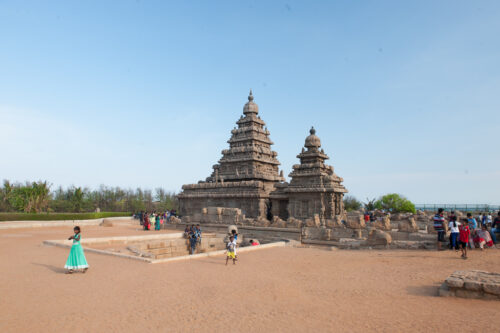Shore Temple is in Mamallapuram, on the Bay of Bengal. This UNESCO World Heritage Site exemplifies the architectural and sculptural excellence of the Pallava dynasty. These monuments were built during the 7th century AD. The entire temple stands on a naturally occurring granite boulder. The temple complex has three separate shrines. Two are dedicated to […]
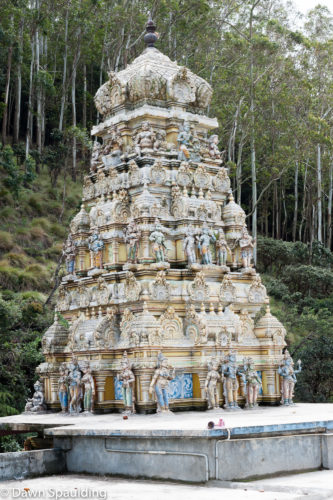
Seetha Amman Temple
We stopped by this roadside temple on our way out of Nuwara Eliya. This is the only temple dedicated to Seeta Amman, consort of Lord Rama. Here is where Seeta was held captive by King Ravana, after he kidnapped her from India over five thousand years ago. I don’t know much else about this, […]
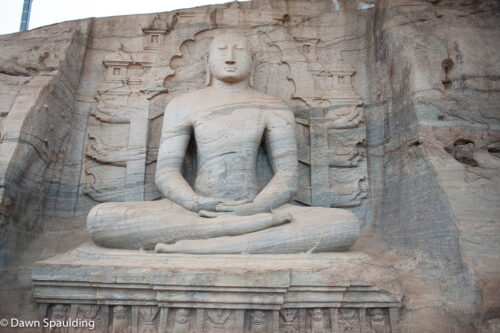
Gal Vihara
Gal Vihara is a group of Buddha images, likely marking the high point of Sinhalese rock carving. 4 Buddha statues carved into a single large granite slab. They were originally part of the Alahana Pirivena monastic complex. The sockets cut into the rock behind the statues show where wooden beams would have been inserted, giving […]
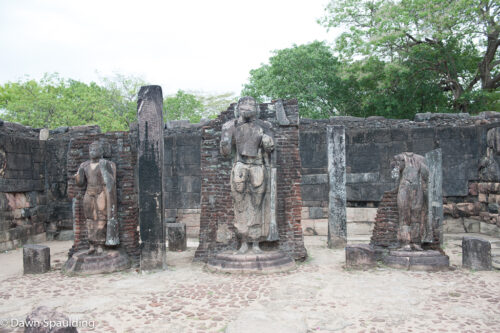
Polonnaruwa: Hatadage
The Hatadage was originally two stories high, built of stone, brick and wood, with a tiled roof. Three Buddha statues represented past, present and future, though only one remains, standing atop a lotus plinth. Some of the 54 stone pillars remain. It is one of the oldest structures, having been constructed by Vijayabahu (the first […]
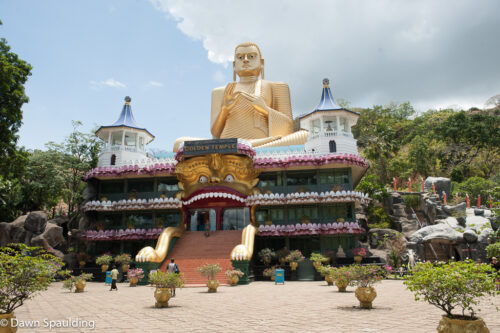
Dambulla Royal Rock Temple
Dambulla Royal Rock Temple is a great example of Sinhalese Buddhist art. This temple dates back to the 1st century when King Valagamba was driven out of Anuradhapura by Tamil invaders. He took refuge here for 14 years before regaining the throne and converting the caves to rock temples. Later kings in the 17th and 18th centuries had […]
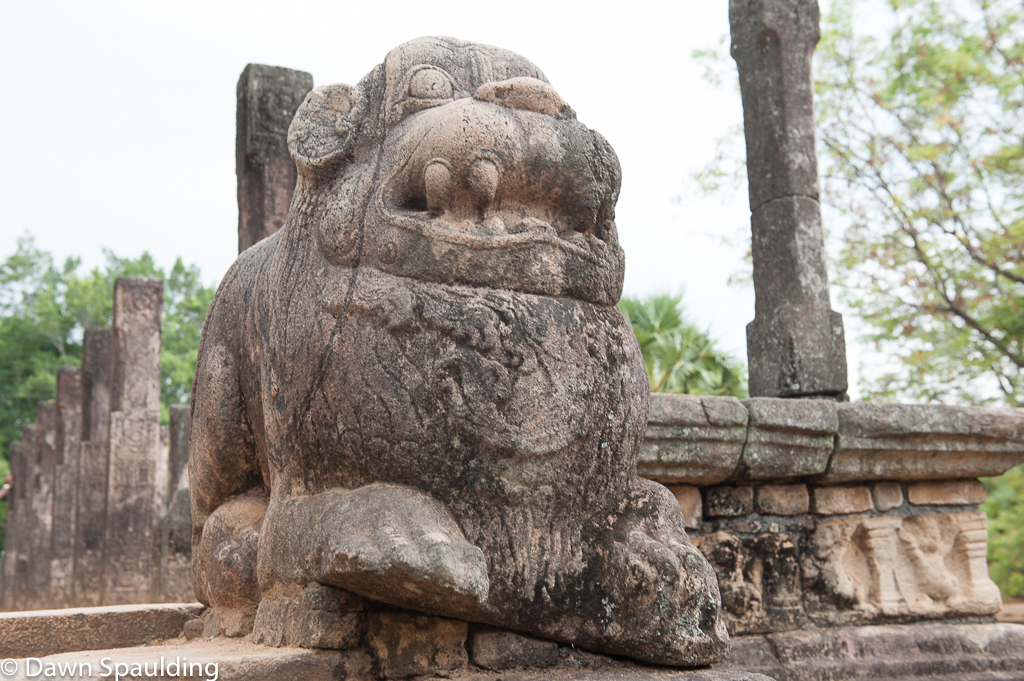
Polonnaruwa: Raja Vaishyabhuganga (Council Chamber)
The Council Chamber, or Raja Vaishyabhuganga, was where the king met with his ministers and officials. The wooden roof has long disappeared, but the elaborate base and carved pillars survive. Friezes of elephants, lions and dwarfs cover the base. Steps are embellished with makara (these look like mythical dragons) balustrades, a pair of moonstones and […]
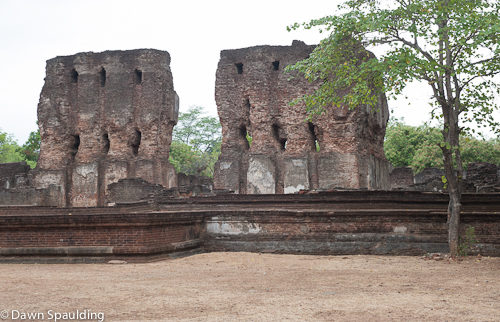
Polonnaruwa: Vijayanta Prasada
Vijayanta Prasada is the first ruins after entering the grounds. This was the royal palace, built by King Parakramabahu I in the 12th Century. In its heyday, the palace stood seven stories tall and contained 1,000 rooms. Construction took a little over seven years. It was destroyed by South Indian invaders in the 13th century. Burned bricks […]
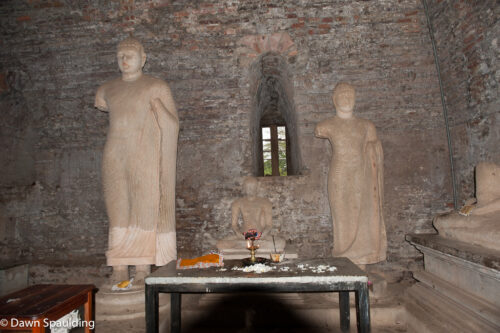
Polonnaruwa: Thuparama Gedige
The Thuparama Gedige is the smallest gedige (hollow Buddhist temple with thick walls) in Polonnaruwa. This has stood the test of time, as proven by the intact roof. Four standing Bodhisattva statues adorn the interior.
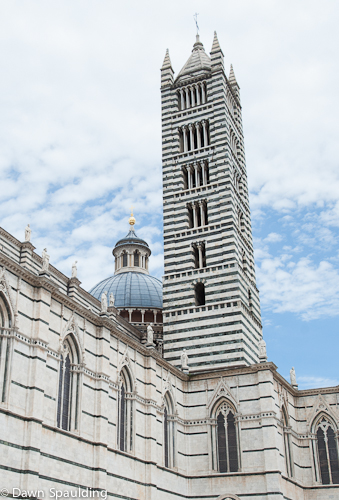
Duomo di Siena
In a country overrun with churches, Siena’s 13th-century Romanesque and Gothic Duomo really stands out. This striped marble building is one of the most striking cathedrals I’ve ever seen. The interior pops with bold bands of black and white (the colors of Siena’s coat of arms) and vivid blue vaults. The inlaid-marble floor depicts historical […]
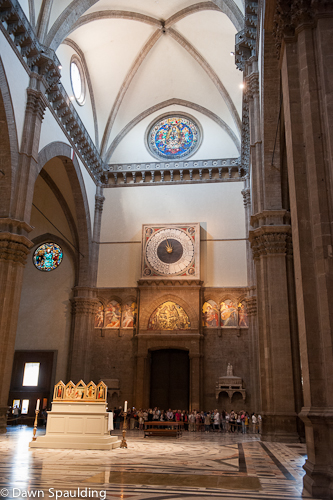
Santa Maria del Fiore, or Duomo, Florence
I think this is the most magnificent structure in Europe. Every time I return to Florence and lay fresh eyes upon this colorful, patterned exterior, I’m struck by its beauty. The original 6th-century church that stood on this site was deemed inappropriate in the 13th century, the same time that new cathedrals sprung up in […]
